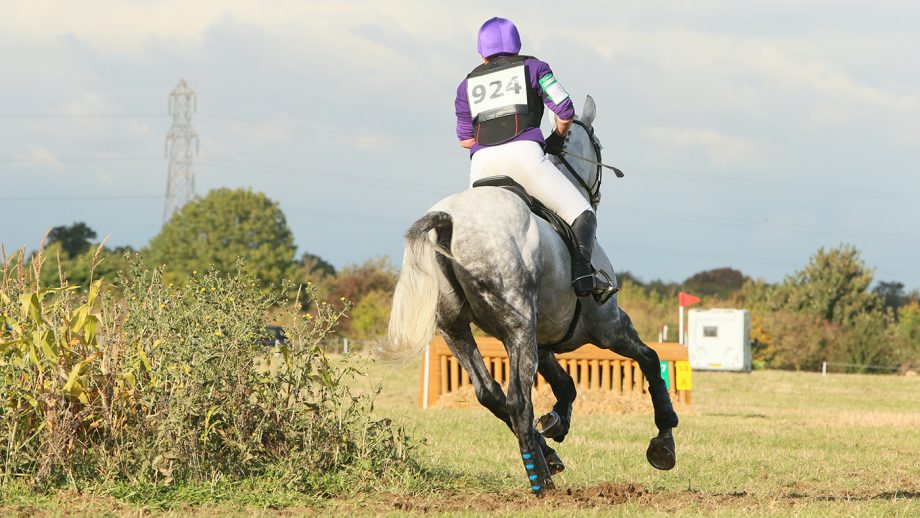The cost of living crisis is starting to bite, but there are cheap ways to improve horse riding skills without breaking the bank. It’s hard to cut costs when it comes to looking after our horses, so the first thing that’s likely to go when money is tight is investing in our own progress in the saddle. However, with a little creativity and organisation, it’s possible to keep on an upward riding trajectory. More training at home will reap rewards in the competition arena, even if show outings need to be restricted while the budget is under pressure.
Video your riding
With lessons or training sessions typically costing upwards of £40, shelling out for weekly instruction might be temporarily beyond the budget. If you do have to cut down to less frequent instruction, see if you can find someone to video any lessons you do have so that you can easily look back and repeat the exercises in an attempt to perfect them. Videoing your schooling sessions can also provide you with excellent visual feedback by showing your strengths and weaknesses when you don’t have a trainer on the ground to help you.
Ride without stirrups
If it’s good enough for Pippa Funnell, it’s certainly good enough for the rest of us. Pippa often rides without stirrups to help her position. Riding without stirrups helps improve your feel, balance and suppleness in the saddle. Done frequently, it will help increase your awareness of your own body and build core strength as you learn to ride in rhythm and in sync with the movement of the horse, without relying on the reins.
Remote lessons
This is something that took off in lockdown, although it has become less popular since the option to have face-to-face teaching has been reinstated. However the technology is there, and many coaches are familiar with the concept. Trainers may be prepared to charge less than an in-person lesson as they are saving their travel time and costs. Or you could ask your instructor if they’d be happy to review a shorter video of you training at home, to give comments and suggestions for what to work on, at a lower price than a full lesson. That way, they don’t lose out altogether on your business – and you retain many of the benefits of their instruction.
Ride more horses
If you have the time, consider approaching horse owners who know you and your riding ability to see if they would be willing to have you exercise their horses. This won’t line your own pockets, but there are huge benefits to riding a variety of horses, as well as developing your core strength from increased hours in the saddle.
Another option is to ride out for a racehorse trainer if you are sufficiently capable. This might not help if you want to improve your dressage seat, but it’s brilliant training for event riders, general riding fitness and horsemanship.

Riding out can improve your fitness, judgement of pace and balance
Keep a diary
It sounds simple, but by recording what you do each day, how your horse went, and what you’re ultimately aiming for in the season, you will be able to form a more organised plan on your progress. When money is no object, we can fall into the trap of randomly doing expensive outings, such as cross-country schooling, trips to the gallops, shows and so on. However, a schedule of progress means you can formulate a targeted plan so that you spend the money when you need to rather than just when you want to.
Find some good local hacking routes
This might require a small financial outlay on some Ordnance Survey maps, or other apps to help plan your route. However, rather than paying to go to a cross-country course, you can often do a fair amount of basic schooling out hacking, if you find some good routes. Picking your way over logs, through dips and ditches, in and out of trees, into water, on different terrains – ideally up and down hills – while out on a hack will teach you and your horse an awful lot about crossing the country, for nothing.

Plenty of training can be achieved out hacking
Most of us don’t have great hacking routes right on our doorstep, so you might need to box up and travel a short distance to avoid riding on busy roads. A good map on your phone will enable you to make the most of your local area, and improve your and your horse’s fitness to boot.
Watch and learn
One of the very best ways to improve is by watching the pros perform. Andrew Nicholson has said that he never had lessons, but he watched how the top riders did it and tried to emulate them. Go to shows and stand by the warm-up area as well as the main ring or the cross-country course. Note how top riders warm up, how they treat their horses, what they do that surprises you, what impresses, and try to incorporate this into your own routines.
And don’t be afraid to ask questions. Many top riders are approachable and if you ask for advice at an appropriate time (not just after they’ve had three poles down), they are usually happy to help.
Phone apps
Training apps are a lot cheaper than clinics or hiring venues, although you might have to pay a small fee for apps offering training services. What they provide varies enormously, from simply recording your ride and tracking your progress, to training “with” the likes of Carl Hester. Here are three training apps worth considering:
Ridely: this is specifically designed to help riders improve their training and reach their goals. There are hundreds of filmed exercises with top riders such as Charlotte Dujardin, Carl Hester and Meredith Michaels-Beerbaum. You also get a calendar to keep track of everything equestrian-related, from shoeing to show results, to enable perfect planning. And you can set goals, and the actions required to make it there.
Equilab: this is a popular app suitable for all disciplines, used by 1m riders. Its tagline is “the world’s largest training community for riders”. It tracks your speed, gait, distance and route, and also records your ride, keeps track of stable management and training patterns. Often when we overestimate how long we have spent cantering in the school, but the app will tell you not only how many minutes, but on which leg you spent more time. It also allows you to share your journey with others, such as fellow riders, coach and vet, and allows them to track your ride remotely, a handy safety feature.
Dressage TestPro and TestPro British Eventing are both interactive apps to help riders to learn their tests easily. It caters for multiple learning styles, visual, audio and kinaesthetic. Learn some tests, try some more advanced moves and practise them!
Curl up with a good book – or listen to a podcast
Dust off the equestrian books on your shelves. Many of us have practical guides written by the likes of Pippa Funnell, Reiner Klimke and Lynn Russell, which we rarely refer to because of life’s busyness and the internet. But many of these guides are packed with great horsemanship and worthwhile exercises. Make a point of reading a chapter a week and trying to incorporate your learnings into a ridden training session.
Here are three recommendations, which are available on Amazon or eBay:
- Kiwi Magic, Andrew Nicholson rides Cross-Country, by Andrew Nicholson
- Basic Training of the Young Horse: Dressage, Jumping and Cross-country, by Reiner and Ingrid Klimke
- Showing to Win, by Lynn Russell and Carolyn Henderson (available on eBay)
Or if you don’t have time to sit down and read, but have some time in the car or while doing chores at home or around the yard, then there are lots of equestrian podcasts that focus on training tips and exercises that you could download and listen to on the go. Here are just a few to consider:
There are also some “ride-along” podcasts available that are designed to be listened to while you are exercising your horse, acting like having a trainer in your ear helping to direct what you need to focus on and how to ride specific exercises. Typically these may involve a very small charge, but they are an inexpensive way to keep your training focused if you struggle to do so without having a trainer present.
You may also like to read…

Compete or train? How the cost of living is having an impact on the horse world

Cost of living squeeze: what it means for horse owners and equestrian businesses

Horse sport takes steps to support competitors during cost of living crisis

Subscribe to Horse & Hound magazine today – and enjoy unlimited website access all year round
Horse & Hound magazine, out every Thursday, is packed with all the latest news and reports, as well as interviews, specials, nostalgia, vet and training advice. Find how you can enjoy the magazine delivered to your door every week, plus options to upgrade your subscription to access our online service that brings you breaking news and reports as well as other benefits.





